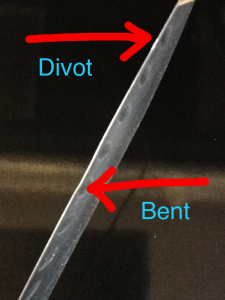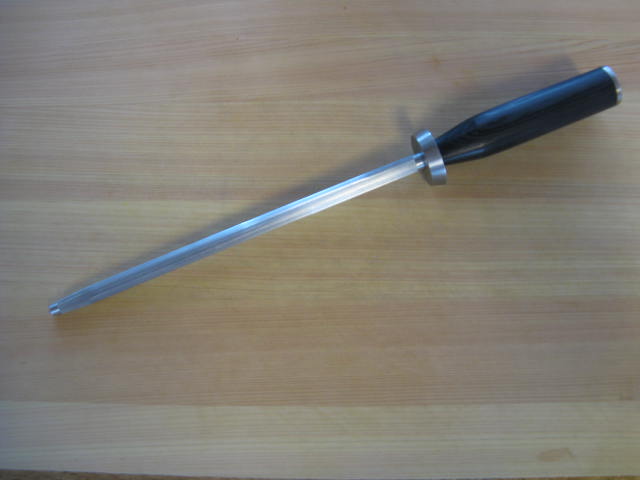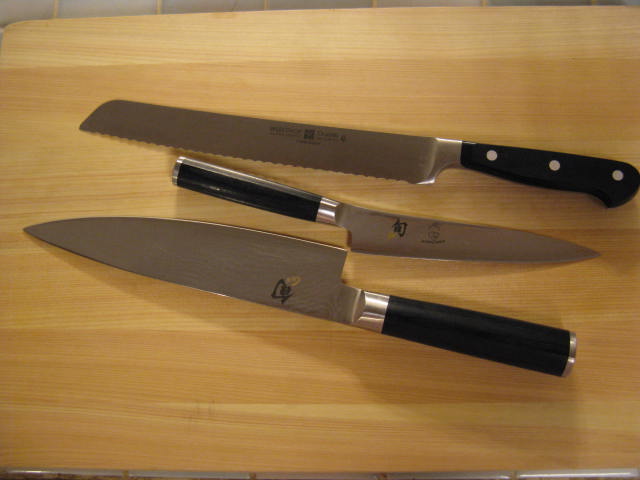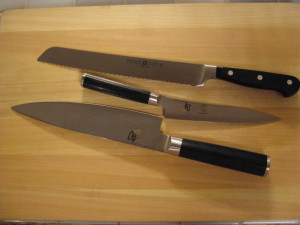I do not recommend sharpening your own knives, at least not if you paid a lot of money for them. Most places charge $1/inch. I do, however, recommend taking it to an actual knife sharpener or store that uses a stone/wheel. Even if you have really cheap knives, if you keep them sharpened they will treat you well!
Stores like Sur la Table charge you for them to use a Chef’s Choice electric sharpener. If that’s you plan, then I would recommend buying a Chef’s Choice electric sharpener for your home. That is the best brand. 🙂
***If you are using an electric sharpener, do NOT push down on the knife when running it through. Just pass it through.***
- You should probably read the directions…just sayin’!
- Some of them come with an extra step that you don’t use every single time
- Some have a slot for only Asian knives
You can buy some inexpensive sharpeners at most kitchen stores, and most brands will make one with their brand name on it and these will get you by. The biggest mistake folks make with these is that they never hone them and sharpen them too often, so don’t fall into that category! Hone so you don’t have to sharpen!
The most popular and effective inexpensive sharpener is the Wustof hand-held guy. They used to have one for Asian and one for regular, and now they sell a universal one for around $30.
Shun now carries a pretty cool whetstone set that takes the guesswork out of finding the perfect angle. Pretty nifty, and comes with their honing steel!
 |
| Shun Steel – for honing, not sharpening, although a lot of times a steel is called a “sharpening steel” in a retail setting. |
 |
| This knife is in dire need of a sharpening! |
You will need to get your knives sharpened one to two times per year, if you hone regularly (Re: Knife Care). I take mine to someone who uses the Kramer Method (series of seven belts) versus a wheel, and this keeps the knives sharp for about one year. If your person is using a wheel/stone (this is normal/standard), you will probably need it done twice a year. This obviously varies by how much you actually use and hone individual knives.
- Honing brushes off miniscule dings and divots you put in the blade with regular use. Brushing these off keeps the knife in shape; if you leave them, you’ll end up starting to have to use more force to get the knife to cut because the blade isn’t straight.
- If you don’t hone your knives, you will need to get them sharpened a LOT more often.
- Bob Kramer is the man who created the seven-belt method. I told you he knows a lot about knives!



